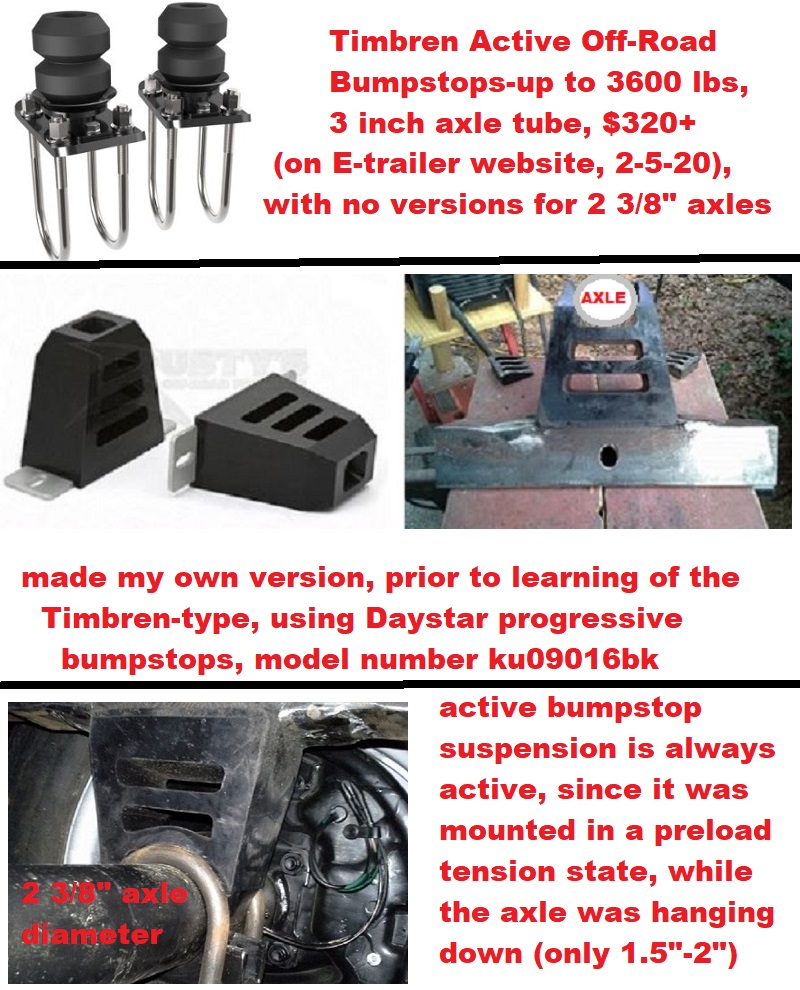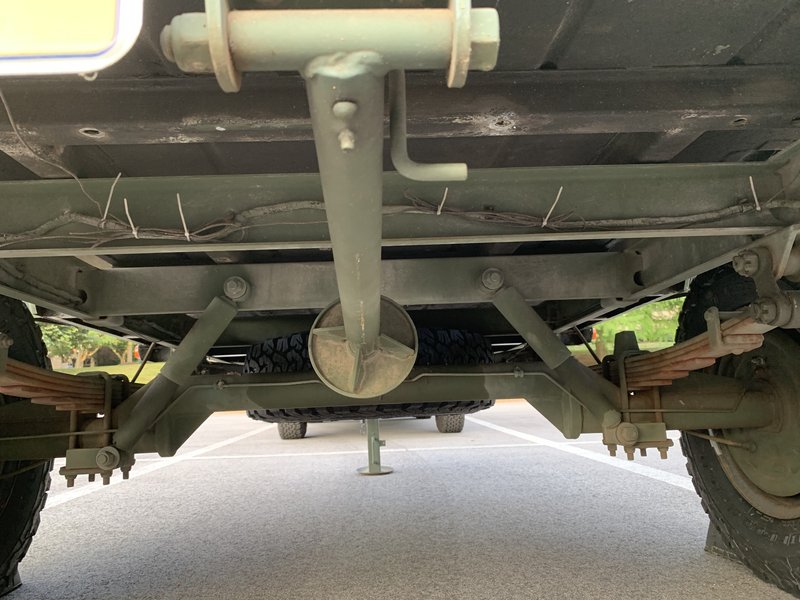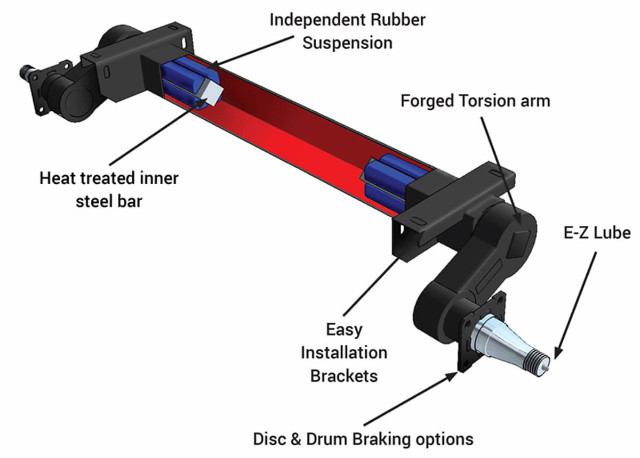* While researching all about trailer axles prior to replacing the "too-small" weight-capacity axle on my TTT, back in 2014, I tried to discover if torsion axles had an internal "stop" to prevent over-flexing and possible damage to fender, frame, and especially the rubber rods inside the axle tube. Only on the Inland RV/Airstream site did I find any reference to "stops" in any torsion-axle website.
https://inlandrv.com/dura-torque-axle-article/* I had envisioned some off-road travel for my trailer, sometime in the future, so I wanted over-travel of the wheels to be compensated-for, or eliminated, due to past experience with really bad roads/trailer interaction. Since I couldn't find any reference to other torsion axle manufacturers' over-travel prevention measures (and the expense of making my own, if not found), I opted to use a leaf-spring axle instead, with a type of over-travel-prevention device that I'd used on several vehicles over the years, cushioning bumpstops (various durometer rubber types, and construction types had been used).
* The axle I chose had to be about 3500 lbs rated, with brakes installed, and at that time I found the spring-type to be about $150 less than torsion, and $250 less than the equivalent Timbren axle-less axle. I already preferred the leaf spring axle for easier parts sourcing and ready availability, so that was what I went with. For around what a torsion axle alone would've cost me, I was able to install all-new axle/springs/hardware + my homemade shock absorbing active bumpstop + the welding machine I made it with (with additional steel frame reinforcements, too).
An equivalent Timbren set-up would've been double that???* The benefit of making my own suspension from individual components is that I could easily (and cheaply) replace any if it failed to function as I wished. The springs are standard double-eye 25.25" size, and come in available weight-ratings from 1500-7000 lbs per pair (I bought 3000 lb per pair, since I knew I'd need nearly that capacity, eventually), and cost $50 per pair, then. The key to making them work correctly (no sag or no bounce, either) on the road, was by tailoring the Daystar progressive bumpstops to precisely fit between axle and frame, with adaptive cushioning since they are hollowed-out. If they needed to have more "give", then I could sever an inner tension for that, as is, they work well, and haven't needed any alteration.
*

- Timbren Active Off-Road Bumpstops vs homemade version, in lieu of shock absorbers.jpg (287.25 KiB) Viewed 5644 times









